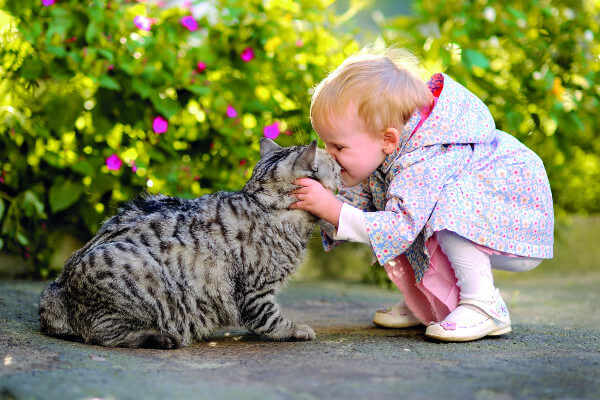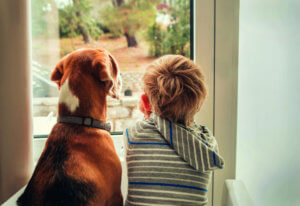Happy Fish, Happy Child?

The benefits of fish, and other pets, for the development of our young ones
When the subject of pets creeps into the conversation in an already bustling family home, the tendency of parents is usually to state they have enough on their plates without the added maintenance of a cat, dog, hamster or pygmy goat.
Yet what’s clear from research is that our young ones can gain real engagement and significant quantities of empathetic life skills when they are responsible for the welfare of a pet. They will also learn about respect, responsibility and compassion for tending to a little life.
While initial studies have always named fish as the perfect pet for children who suffer from autism, more rounded thinking now brings in a range of pets and a wider scope of children, so that any – whether or not they possess learning difficulties – can feel enriched by looking after pets.
Here are our top five suggestions:
ONE – Consider your type of pet
 For kids to bond with pets it makes sense for the relationship to be comfortable in both directions. While smaller dogs, for instance, are a much more practical choice than larger ones, so too must the pet have the temperament that it will withstand a child’s inquisitive, perhaps clumsy actions.
For kids to bond with pets it makes sense for the relationship to be comfortable in both directions. While smaller dogs, for instance, are a much more practical choice than larger ones, so too must the pet have the temperament that it will withstand a child’s inquisitive, perhaps clumsy actions.
A chinchilla, for instance, has fragile ribs and it’s easy to squeeze it to a point where it may pass out or die; while reptiles carry salmonella which can be passed on when children touch them then put fingers in their mouths.
The most popular pets for young children are older puppies, young dogs, older kittens, guinea pigs, older rabbits, hamsters and fish.
TWO – Create and stick to a schedule
If introducing a pet into the home, it’s a good idea to bring in a set of rules at the same time. These would include a list of duties including feeding, cleaning, walks, and overall a delegation of chores that mean every member of the family takes shared responsibility for its welfare.
THREE – Let your child discover his or her own stimulation
 Fish have often been called out as the perfect pet for children because they require little maintenance, are incredibly relaxing to watch, and will respond to approaches without ever finding themselves in danger.
Fish have often been called out as the perfect pet for children because they require little maintenance, are incredibly relaxing to watch, and will respond to approaches without ever finding themselves in danger.
Yet any pet can be a great stimulation for a child looking for entertainment and company, particularly when other members of the household are busy, which particularly might be the case with only child families.
Allowing your child quiet time to really get to know their pet, and to create their own bond away from the interruptions of others, is a great idea that will really pay back as the relationship develops.
FOUR – Communication
One of the main benefits of having a pet is in the way it promotes communication between itself and a young person. Scientists believe this action is then replicated by kids in everyday situations with other people, boosting social skills, adding new layers of confidence, self awareness and belief.
FIVE – Don’t rush a decision
And finally, as is always the case, don’t rush the decision to bring a pet into the home for the benefit of your child. If you are looking to build their development, stimulation and interest, then learning the first lesson of pet-owning – that nothing comes straight away and must be earned – is a great way to start!
